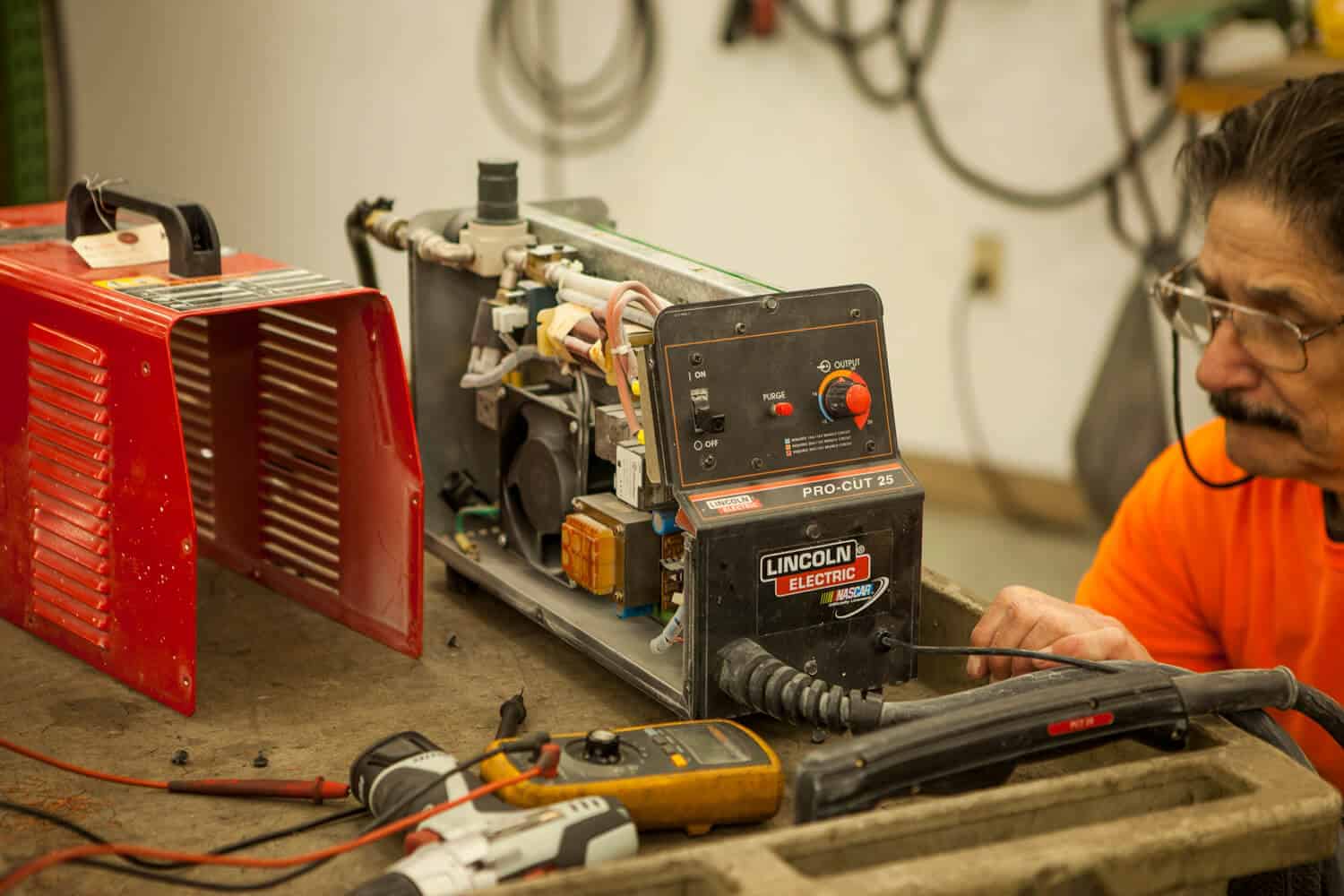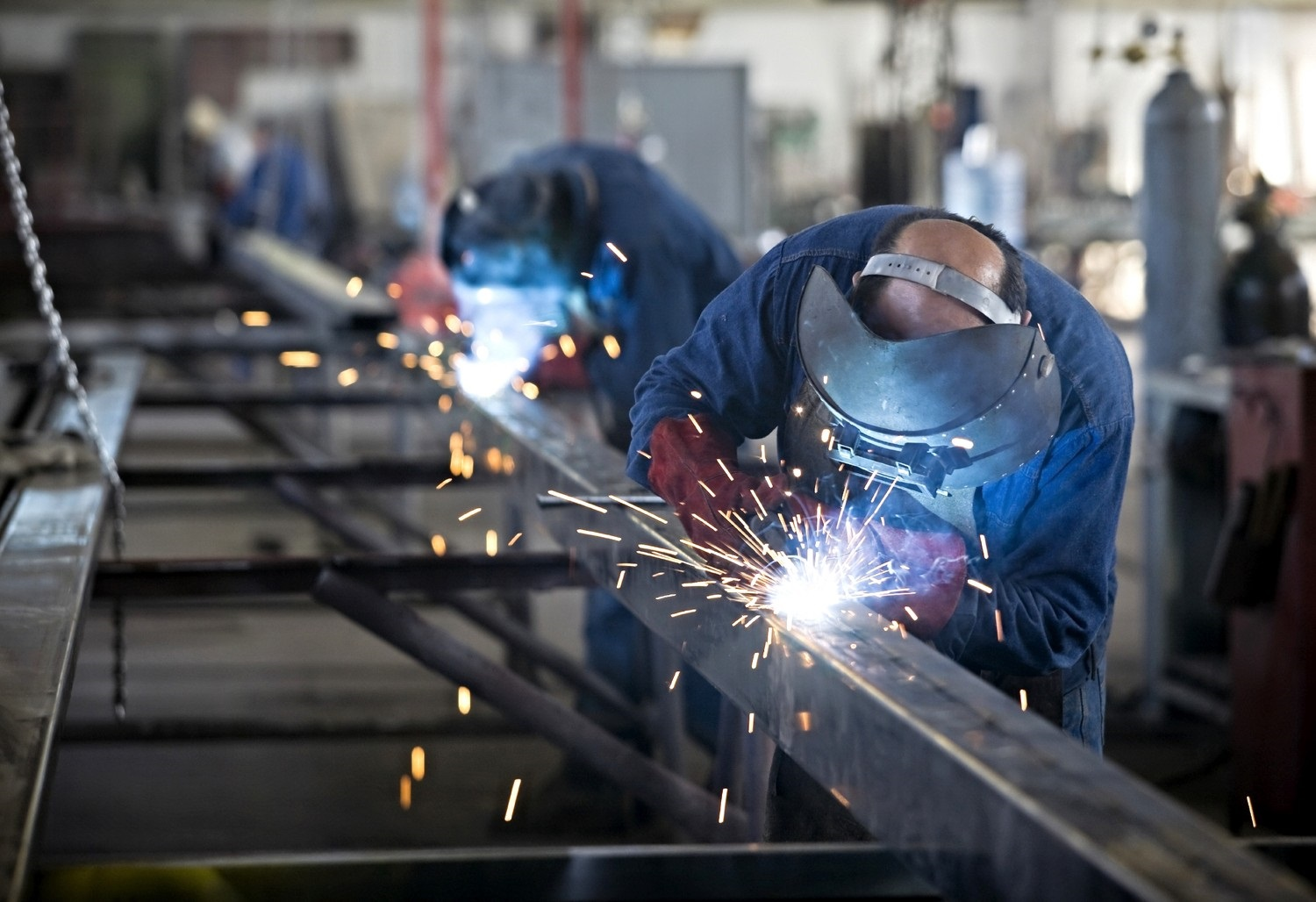Typical Welding Repair Issues and Exactly How to Address Them Properly
Welding repairs commonly encounter a series of problems that can endanger the honesty of the end product. Typical issues include poor penetration, porosity, and misalignment, among others. Each flaw presents distinct challenges that call for details techniques for resolution. Comprehending these problems is vital for welders aiming to boost their skills and outcomes. This conversation will certainly discover these typical welding fixing issues and effective techniques to resolve them.
Inadequate Penetration
Insufficient penetration occurs when the weld metal falls short to totally fuse with the base material, leading to weak joints and potential structural failings. This concern often originates from not enough warmth input, inaccurate electrode angle, or incorrect welding speed. Welders might encounter poor infiltration due to a mistake of the essential specifications for a specific product thickness or type. In addition, contamination on the base material's surface can prevent efficient bonding, exacerbating the trouble. To resolve poor infiltration, welders need to assure suitable setups on their devices and keep a tidy job surface area. Normal evaluation of welds is advised to recognize any type of shortages early, enabling for prompt improvements and the prevention of jeopardized architectural stability in bonded settings up.
Porosity
Porosity is an usual problem in welded joints that materializes as small gas bubbles entraped within the weld steel. This flaw can jeopardize the integrity of the weld, bring about decreased toughness and prospective failure under stress and anxiety. Montana Mobile Welding and Repair Belgrade Fabrication. Porosity commonly develops from contamination, wetness, or incorrect welding strategies, which permit gases to leave into the liquified weld pool. To resolve porosity, welders ought to ensure correct surface area prep work, maintain a clean workplace, and use suitable welding criteria. Furthermore, picking the right filler product and protecting gas can mitigate gas entrapment. Normal evaluation and screening of welds can help identify porosity early, guaranteeing prompt corrective actions are taken, therefore maintaining the quality and dependability of the bonded structure
Misalignment
Imbalance in welding can occur from various factors, including improper arrangement and thermal development. Recognizing the source is vital for efficient resolution. Several modification strategies are readily available to straighten components and assure structural integrity.
Reasons of Imbalance
Welding misalignment usually stems from a selection of underlying issues that can endanger architectural stability. One main cause is incorrect fit-up of elements prior to welding, which can lead to voids and uneven surface areas. Variations in thermal development throughout the welding process can also cause distortion, specifically if the products being signed up with have different coefficients of expansion. Additionally, inadequate fixturing and securing may stop working to hold elements safely in area, causing movement during welding. Poorly maintained devices, including welding machines and devices, may present incongruities in the weld grain, additional adding to imbalance. Driver mistake, stemming from insufficient training or experience, can also play a substantial duty in creating misaligned welds.

Correction Strategies Readily Available
Attending to imbalance successfully needs a combination of corrective methods tailored to the specific concerns available. One typical technique is using components or jigs to hold components in the right setting throughout welding, ensuring regular alignment. Additionally, pre-heating the materials can help decrease distortion and boost fit-up. For significant misalignment, mechanical realignment techniques, such as using hydraulic jacks or clamps, can be used to deal with the position prior to welding. Post-weld heat treatment may also be required to soothe stress and anxieties brought on by misalignment. Mindful inspection and adjustment throughout the arrangement phase can stop misalignment issues from becoming significant issues, advertising a smoother welding procedure and boosting total architectural integrity.
Distortion
Distortion is a common challenge in welding that can arise from different aspects, consisting of irregular cooling and heating. Comprehending the sources of distortion is important for applying effective prevention methods. Addressing this problem not just boosts structural integrity however likewise enhances the general top quality of the weld.
Reasons for Distortion
When subjected to the intense heat of welding, materials frequently undertake adjustments that can bring about distortion. This sensation mostly develops from thermal growth and tightening during the welding process. As the weld area warms up, the product increases; upon air conditioning, it acquires, which can produce inner anxieties. On top of that, uneven heating across a work surface can exacerbate these stresses, resulting in bending or flexing. The kind of product also plays a significant role; steels with differing thermal conductivity and coefficients of development might respond in different ways, resulting in unpredictable distortions. In addition, poor joint layout and poor fixturing can add to misalignment during welding, raising the probability of distortion. Recognizing these causes is necessary for reliable welding fixing and avoidance strategies.
Avoidance Techniques
Effective prevention techniques for distortion during welding concentrate on managing warmth input and making certain correct joint style. Keeping a constant warm input assists to lessen thermal growth and tightening, which can bring about distortion. Utilizing methods such as pre-heating the workpiece can also decrease the temperature level gradient, promoting consistent home heating. Additionally, picking suitable joint layouts, such as T-joints or lap joints, can enhance stability look here and lower tension focus. Applying correct fixturing to secure the workpieces in position better aids in preserving positioning throughout the welding procedure. Lastly, staggered welding series can distribute warmth a lot more equally, avoiding localized distortion. By using these techniques, welders can considerably lower the possibility of distortion and boost the general top quality of their welds.
Fracturing
Fracturing is an usual concern run into in welding fixings, typically arising from numerous variables such as improper air conditioning rates, material selection, or insufficient joint preparation. The occurrence of cracks can considerably compromise the stability of the weld, bring about prospective failures throughout procedure. To address this problem, welders need to first examine the source, ensuring that products work and appropriately chosen for the particular application. Furthermore, regulating the cooling rate throughout the welding procedure is vital; quick air conditioning can generate tension and result in breaking. Appropriate joint style and prep work additionally add to lessening the threat. Implementing these approaches can enhance weld quality and durability, eventually decreasing the probability of fracturing in completed weldments.

Insufficient Blend
A considerable issue in welding fixings is incomplete fusion, which occurs when the weld metal does not effectively bond with the base product or previous weld passes helpful hints - Belgrade Welding. This problem can bring about weaknesses in the joint, possibly jeopardizing the integrity of the bonded framework. Variables contributing to incomplete blend include insufficient warm input, inappropriate welding technique, and contamination of the surface areas being joined. To resolve this issue effectively, welders need to assure correct pre-weld cleaning and surface area prep work, in addition to change their welding specifications to accomplish appropriate penetration and fusion. Normal inspection throughout the welding procedure can additionally help identify incomplete blend early, enabling timely restorative procedures to boost the total quality of the weld
Overheating
While welding repair work can improve architectural stability, overheating offers a substantial challenge that can lead to product destruction. Extreme heat during welding can change the mechanical buildings of metals, resulting in reduced stamina, enhanced brittleness, and warping. This sensation is especially essential in high-stress applications where structural dependability is extremely important. Determining overheating can entail visual inspections for staining or distortion, along with checking temperature throughout the welding process. To reduce the risks connected with getting too hot, welders ought to use proper methods, such as controlling heat input, adjusting traveling speed, and making use of appropriate filler materials. In addition, implementing pre- and post-weld warmth therapies can help bring back product properties and improve the total quality of the repair, ensuring lasting performance and safety.
Often Asked Questions
What Are the Common Indications of a Welding Problem?

Exactly How Can I Examine My Welds for Quality?
To evaluate welds for top quality, one can make use of visual evaluations, ultrasonic screening, and radiographic approaches. Each method ensures structural honesty, identifies defects, and verifies adherence to specified standards, eventually improving the integrity of the welded joints.
What Security Safety Measures Should I Take While Welding?
When welding, one should focus on safety and security by wearing proper personal protective devices, guaranteeing appropriate air flow, safeguarding flammable materials away, keeping a tidy work space, and understanding surroundings to avoid crashes and injuries.
Can I Fix a Weld Without Remodeling the Entire Joint?
Fixing a weld without remodeling the whole joint is possible, depending on the damages (Belgrade Welding). Methods such as grinding, adding filler material, or utilizing a welding procedure can effectively resolve particular imperfections while preserving the surrounding framework
What Tools Are Important for Reliable Welding Fixes?
Vital tools for portable stick welder effective welding repairs consist of a welding maker, wire brush, mill, protective equipment, clamps, and filler materials. Each device plays a vital role in ensuring top quality and security throughout the repair service process. Porosity normally occurs from contamination, moisture, or incorrect welding techniques, which allow gases to escape right into the liquified weld pool. Improperly maintained tools, consisting of welding machines and tools, might introduce disparities in the weld grain, more contributing to imbalance. When subjected to the extreme heat of welding, materials often go through changes that can lead to distortion. Fracturing is a common concern come across in welding repairs, usually resulting from different variables such as improper air conditioning rates, material selection, or insufficient joint preparation. A substantial issue in welding repairs is insufficient combination, which occurs when the weld metal does not adequately bond with the base material or previous weld passes.